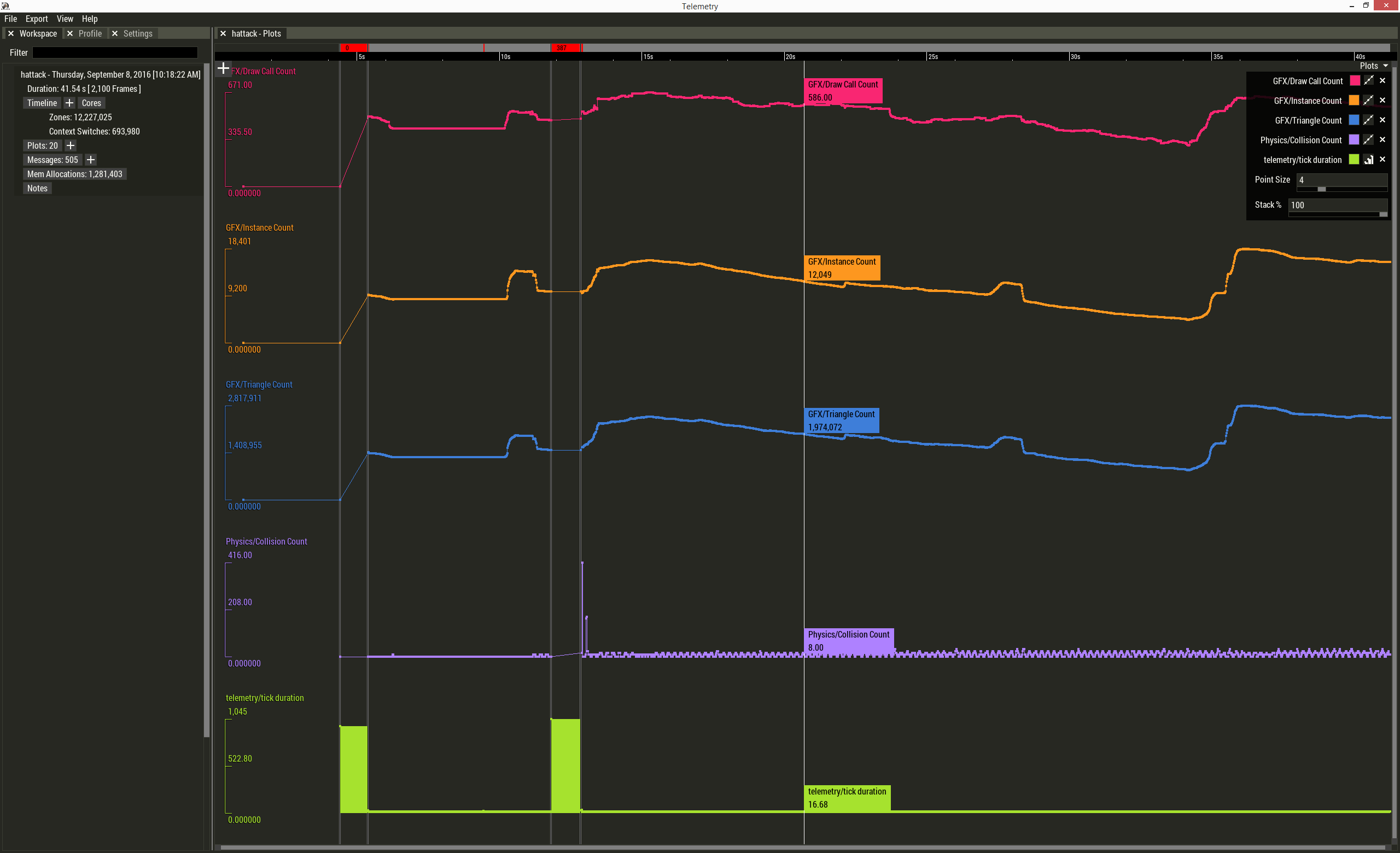The Hookup Dossier: Your Ultimate Guide to Modern Dating
Explore the ins and outs of dating, relationships, and modern romance.
Behind the Scenes: How Real-Time Gaming Telemetry Turns Players into Data Stars
Discover how real-time gaming telemetry transforms players into data stars, revealing secrets to skyrocket your gaming skills!
Unlocking Player Potential: The Magic of Real-Time Gaming Telemetry
Unlocking Player Potential: In the world of competitive gaming, understanding player behavior is crucial. Real-time gaming telemetry allows developers and coaches to monitor in-game actions, analyze performance metrics, and identify areas for improvement. With the right data at their fingertips, teams can implement targeted training programs that cater to individual player needs, thus maximizing their potential. This level of insight fosters a better grasp of player dynamics, which can lead to enhanced teamwork and increased chances of success in high-stakes environments.
Moreover, the application of real-time gaming telemetry extends beyond just skill assessment; it can also play a significant role in player engagement. By providing players with immediate feedback on their performance, such as accuracy percentages, decision-making speed, and more, developers can keep players motivated and invested in their growth. Additionally, gamifying the feedback process—such as by rewarding achievements based on telemetry data—can further incentivize players to push their limits and strive for excellence in their gameplay.

Counter-Strike is a popular multiplayer first-person shooter game where teams of terrorists and counter-terrorists compete to complete objectives. Players can gear up and engage in strategic gameplay, making the most of their skills and teamwork. For those looking to enhance their gaming experience, using a duel promo code can offer great rewards.
Behind the Curves: How Data Visualization Transforms Gameplay Insights
In the realm of gaming, data visualization plays a pivotal role in transforming raw gameplay data into actionable insights. Behind the curves lies a wealth of information that can significantly enhance player experience and game design. By employing various visualization techniques—such as heat maps, bar graphs, and dynamic dashboards—developers can identify patterns and trends in gameplay behaviors. This allows for a deeper understanding of player preferences and engagement levels, ultimately leading to more enjoyable gaming experiences.
Furthermore, visualizing data effectively can help developers fine-tune gameplay mechanics and tailor updates to align with player expectations. A successful implementation of data visualization not only makes complex datasets more comprehensible but also fosters a stronger connection between players and developers. For example, by presenting player progress through interactive graphs, developers can motivate gamers to explore new strategies and challenge themselves, creating a cycle of engagement that benefits both parties.
What Can Real-Time Gaming Telemetry Teach Us About Player Behavior?
Real-time gaming telemetry has emerged as a powerful tool in understanding player behavior. By tracking in-game actions, such as movement patterns, decision-making processes, and the time spent on specific tasks, developers gain invaluable insights into how players interact with their games. Analyzing this data can help identify trends and preferences, enabling developers to optimize gameplay experiences by tailoring challenges and rewards that resonate with their audience. For instance, telemetry can reveal which levels are too difficult, leading to player frustration, or highlight popular game mechanics that keep players engaged for longer periods.
Moreover, these insights allow game designers to create more immersive and engaging experiences. By studying how players adapt to various challenges, developers can refine game mechanics and narrative elements, leading to enhanced player satisfaction. Additionally, understanding player behavior through real-time gaming telemetry can also aid in effective marketing strategies by targeting specific player demographics and fostering community engagement. In essence, leveraging telemetry data not only enriches the game development process but also fosters a deeper connection between players and the gaming world.